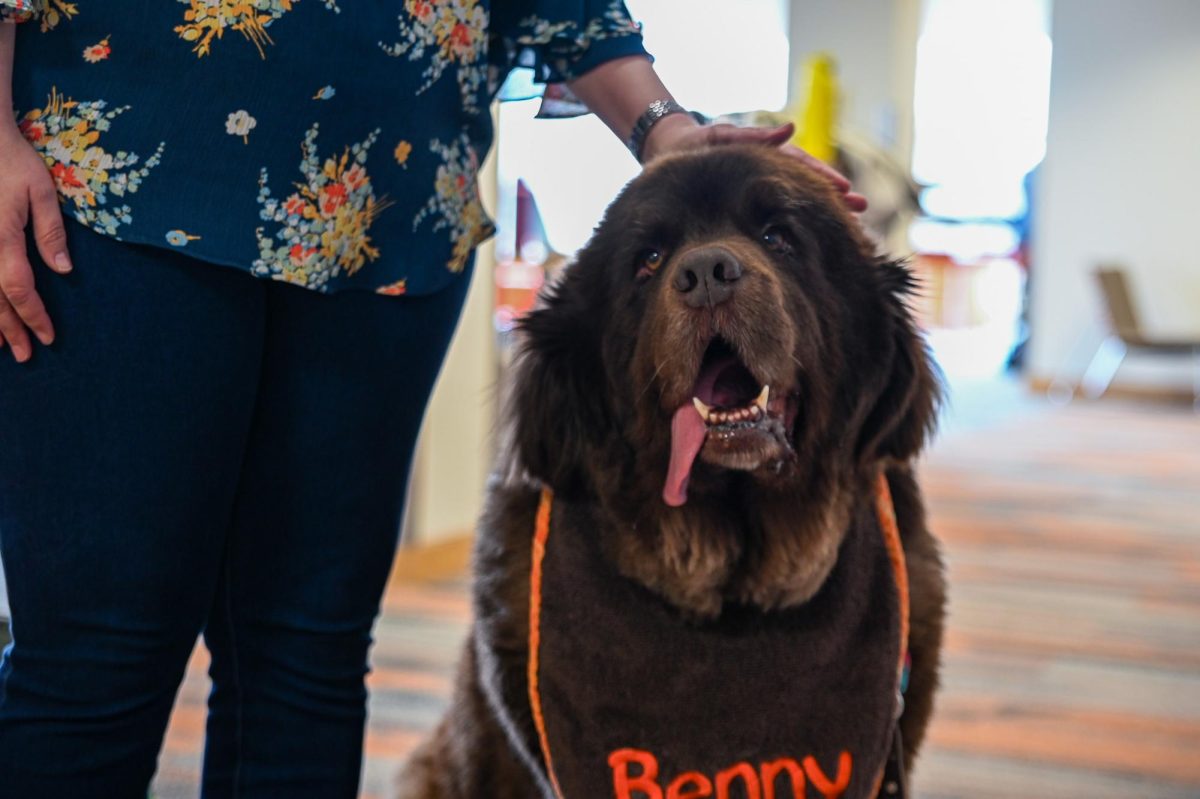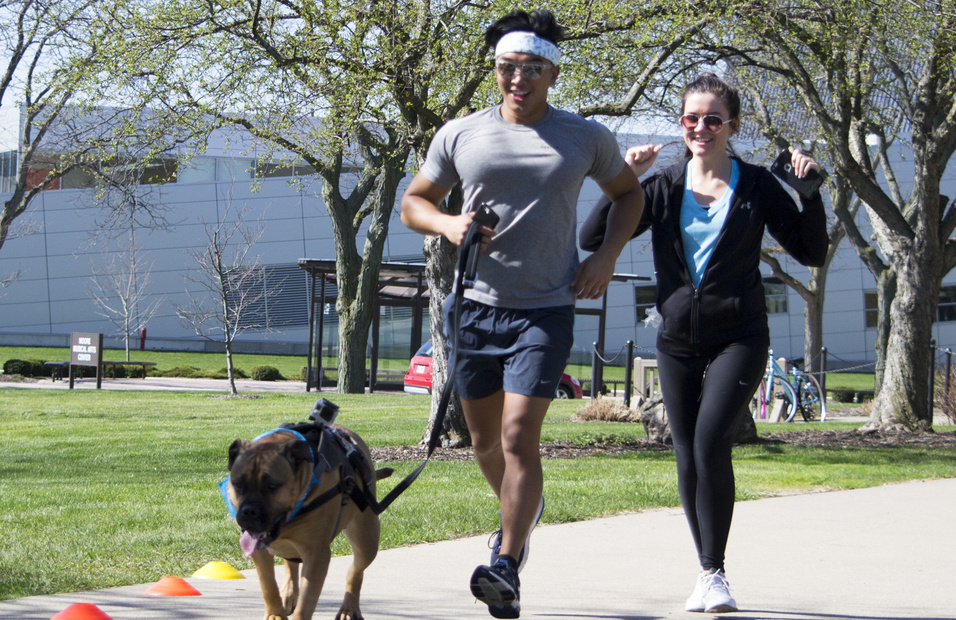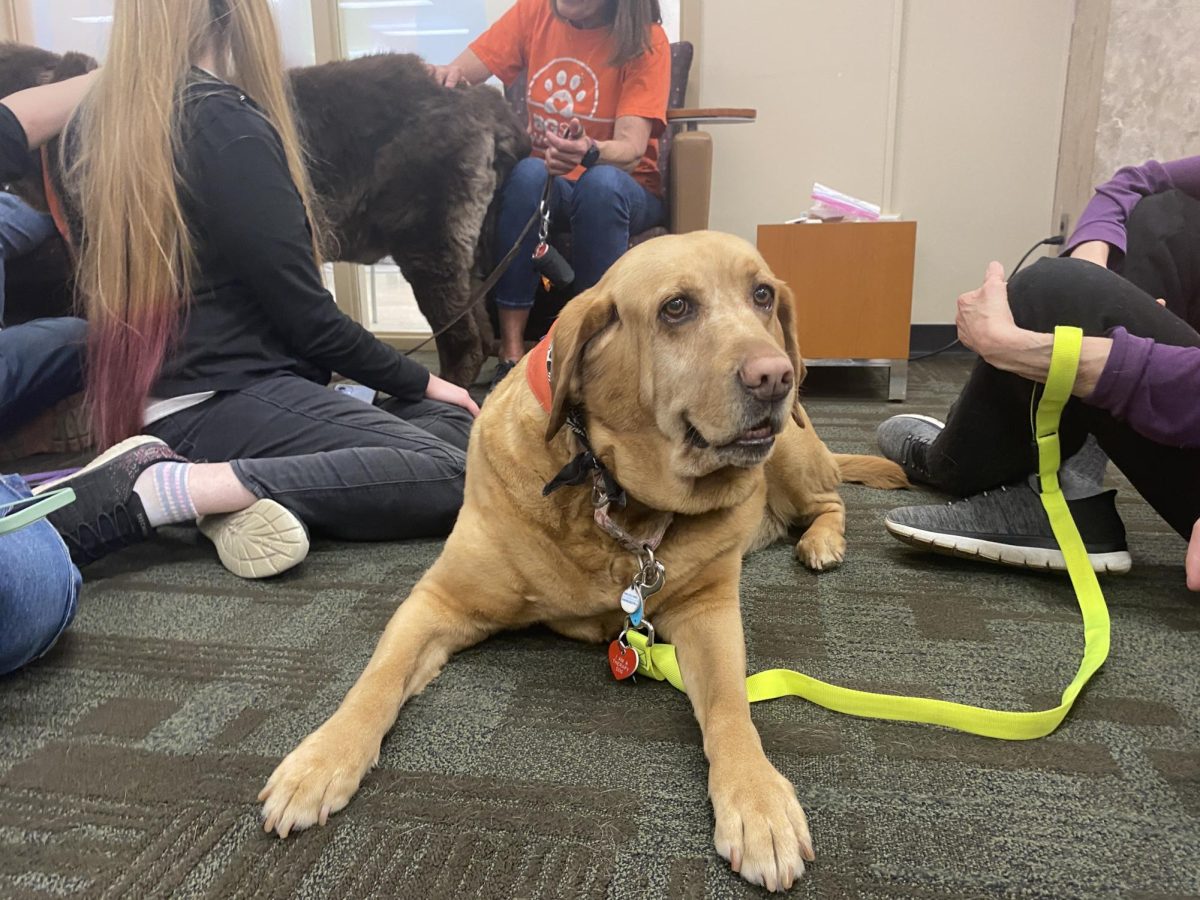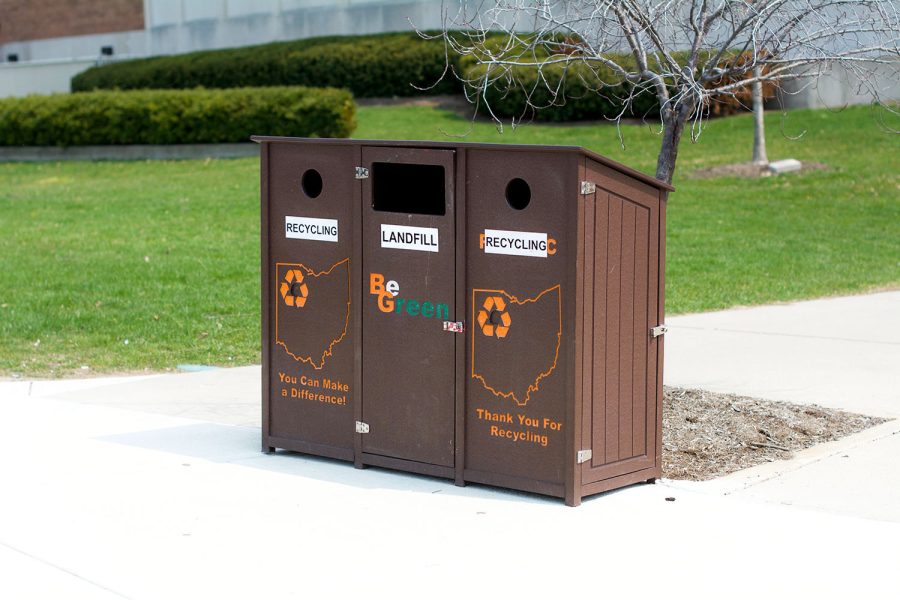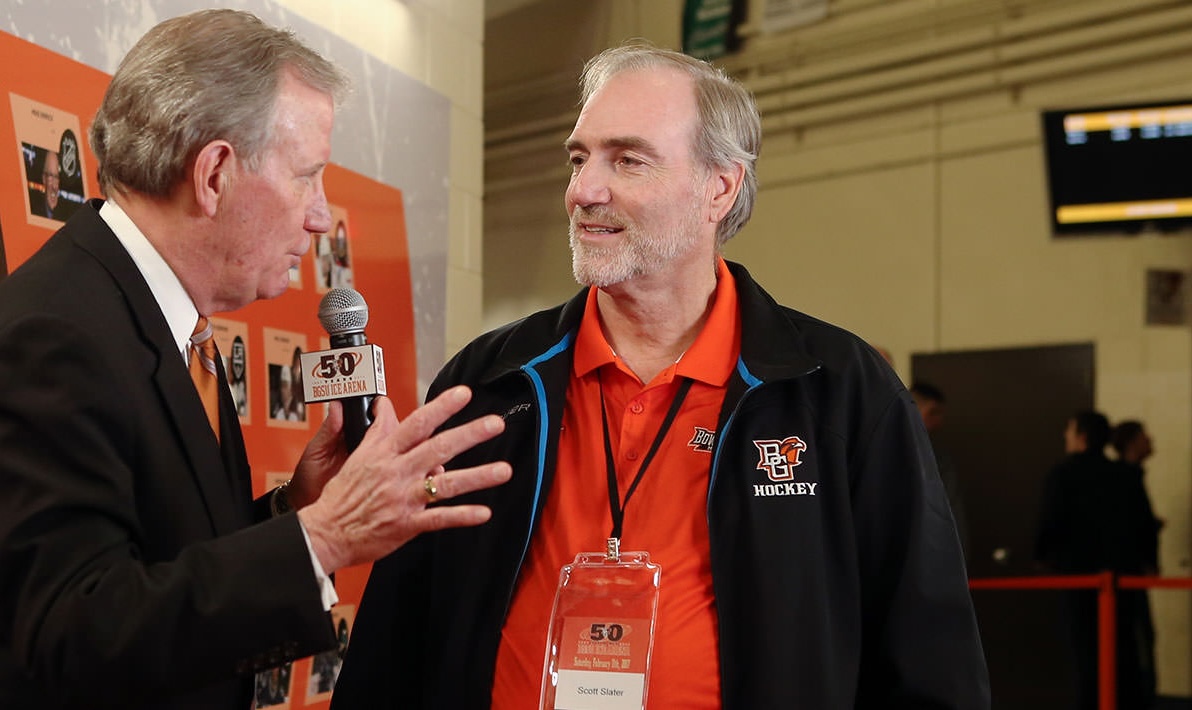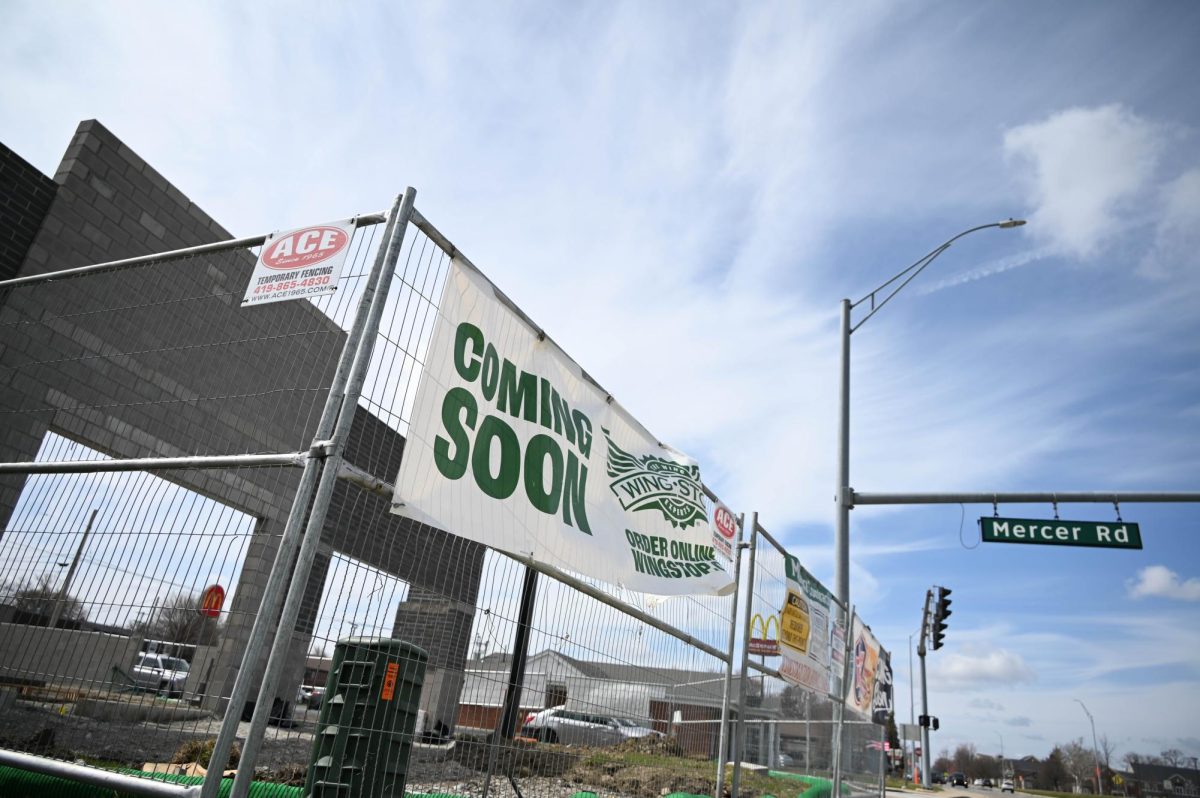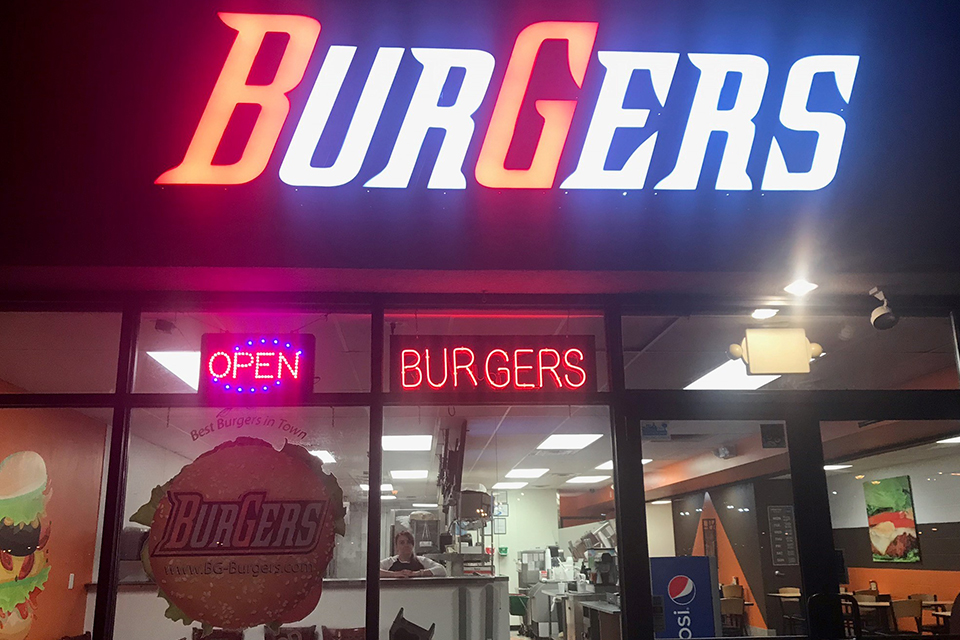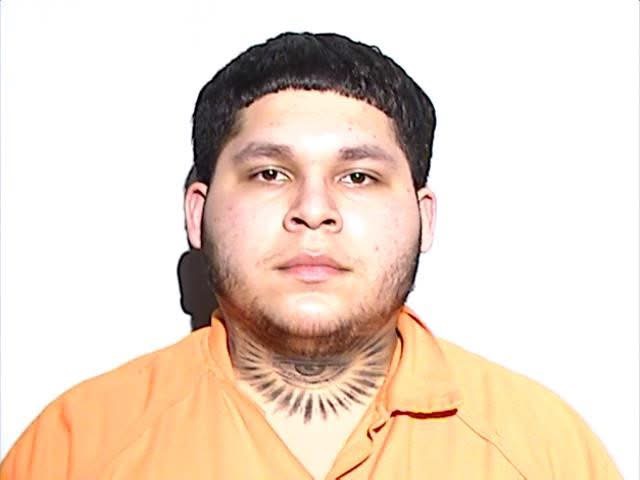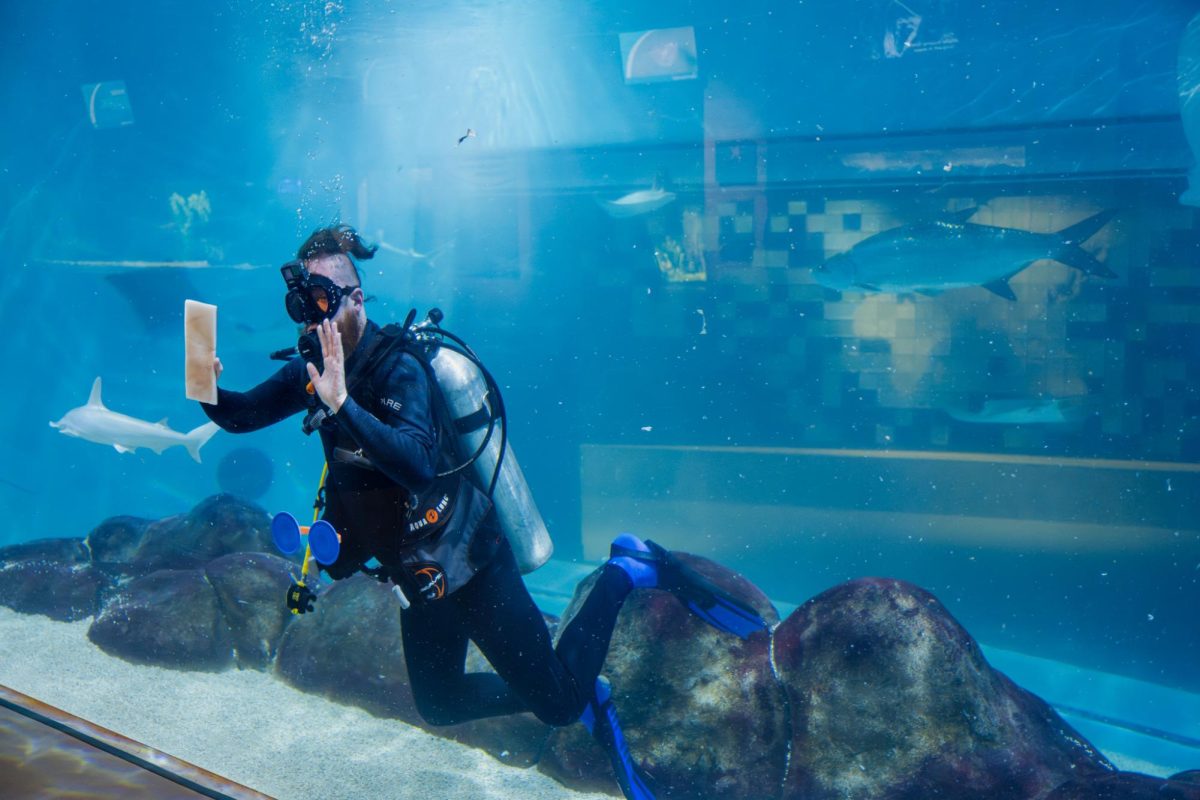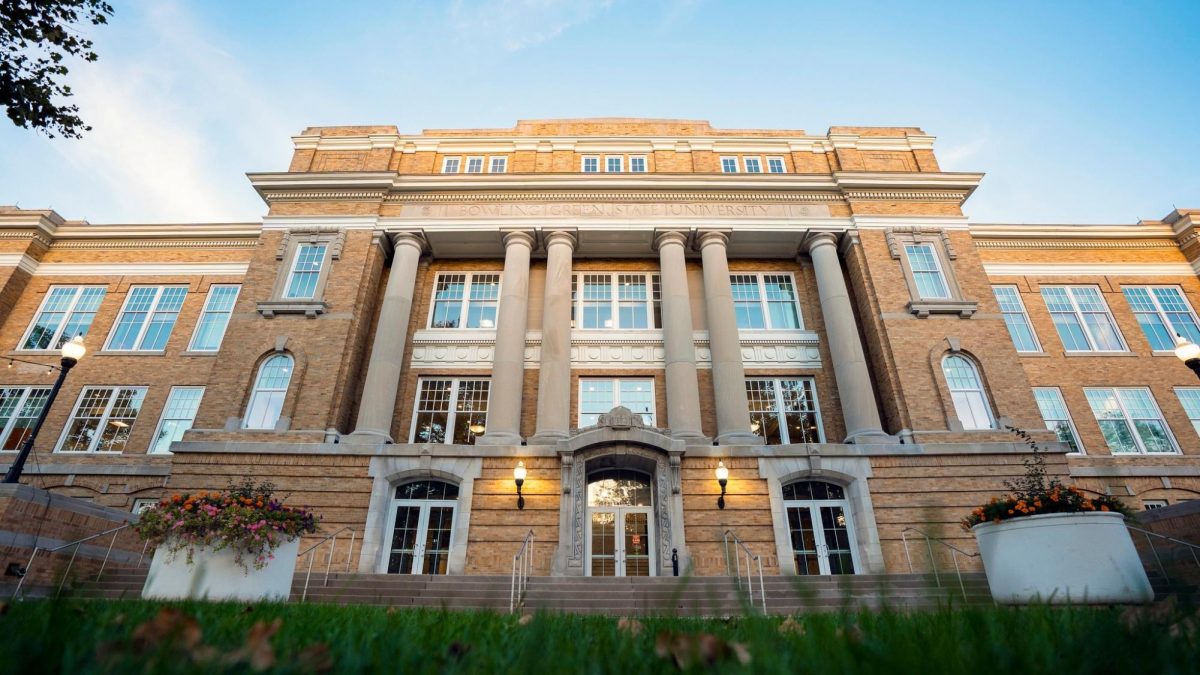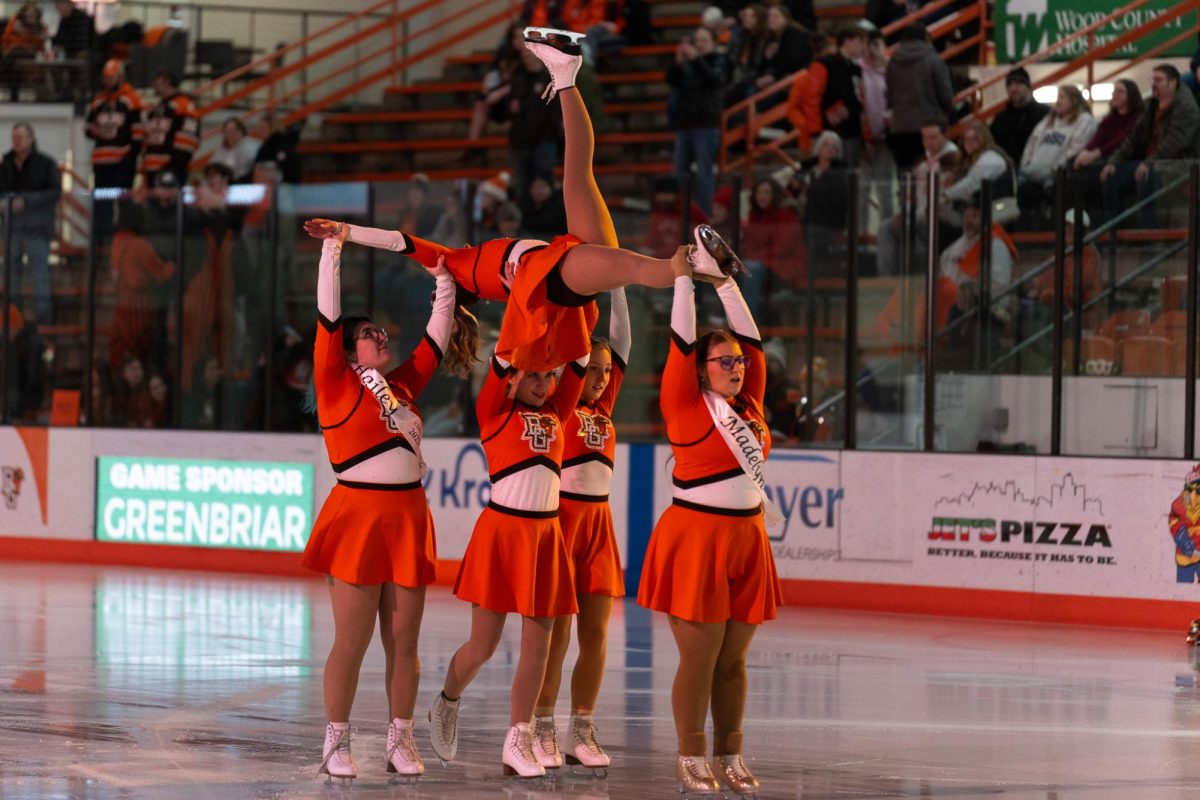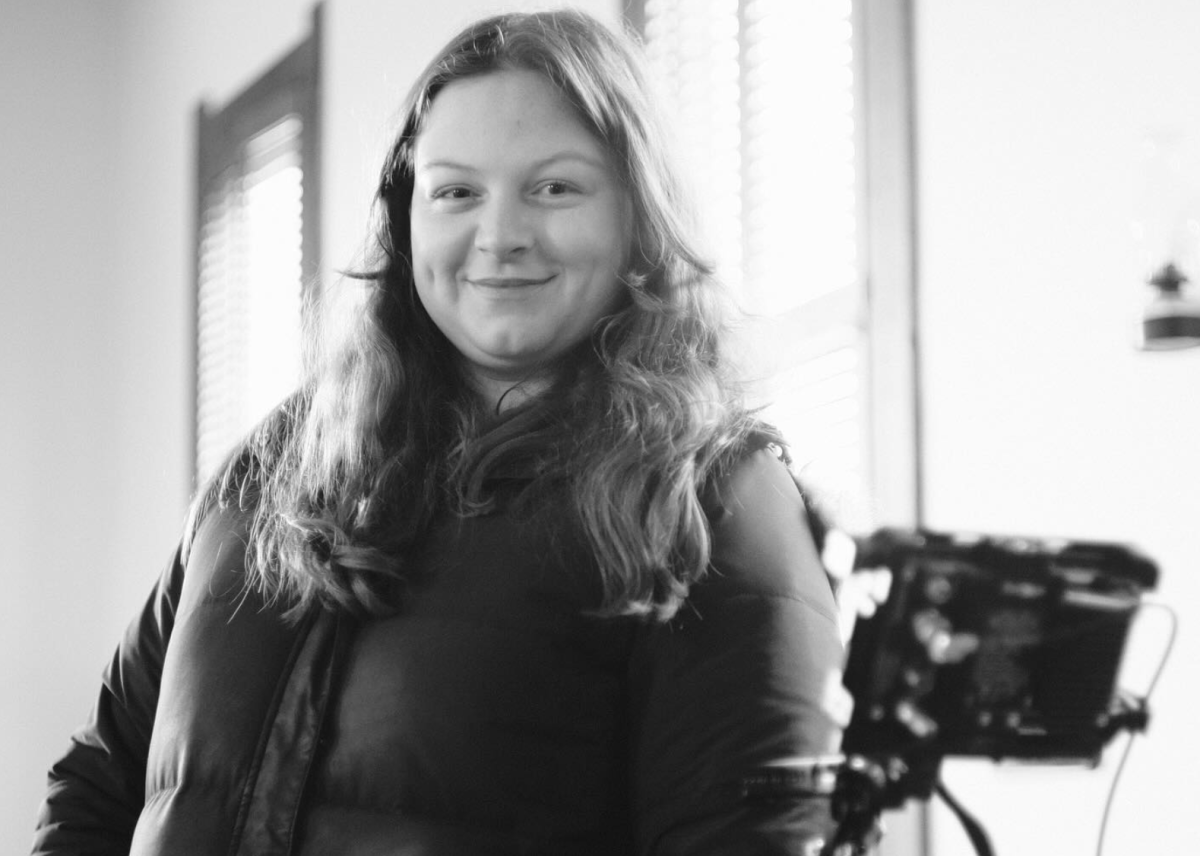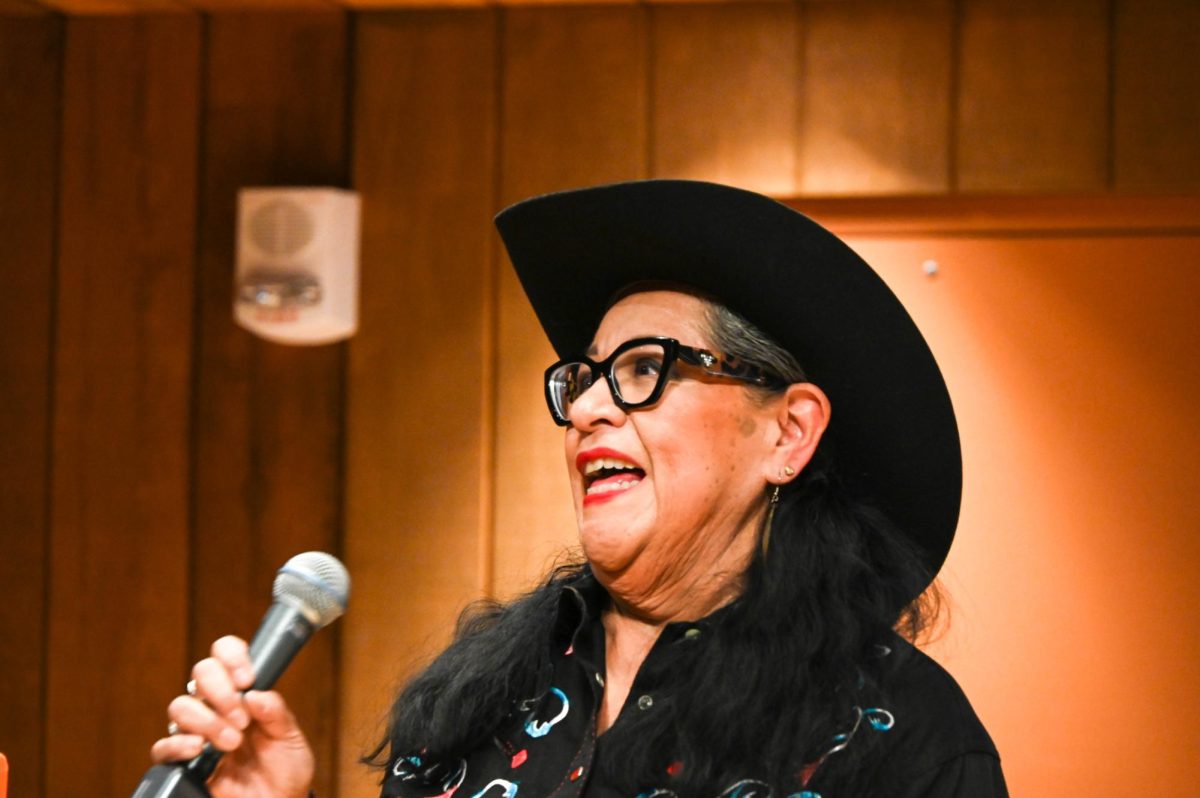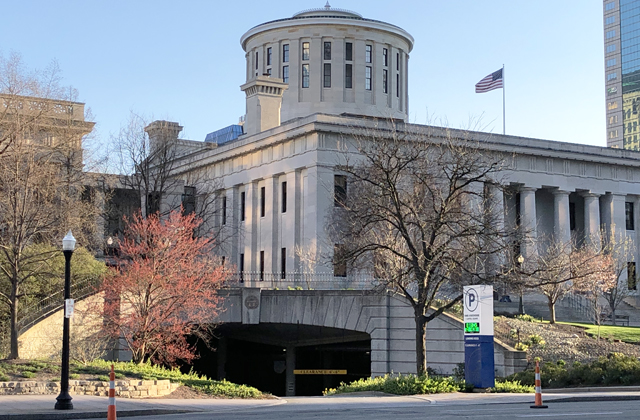Every spring, a flock of University Falcons plan to leave the comfort of their campus nest, spread their wings at graduation and soar into the real world.
Along with senior students, a pair of peregrine falcons celebrates their own recurring spring tradition by nesting at the Wood County Courthouse and preparing for the birth of their chicks.
The falcons have returned to the Wood County clock tower six years in a row. While the nesting site sits at a height of 195 feet, anyone can get up close and personal with the falcon family by watching the live Falcon Cam, an online enhancement presented by the University and the Wood County Commissioner’s Office.
Wood County Administrator Andrew Kalmar said the video feature is made possible by the stars themselves. “It’s the choice of the birds,” he said. “They’re cliff-dwelling birds, and since we don’t have cliffs around here, they chose the next best thing.”
After discovering the falcons hanging around the north side of the clock tower, the Wood County commissioners contacted the Ohio Department of Natural Resources. ODNR created a custom-built U-shaped nesting box, complete with high quality gravel.
The Falcon Cam feature started when the University got involved about four years ago and the marketing office offered a quality video camera. If you check the live footage this week, you will see the parent falcons protecting four eggs, which were laid on March 22.
Kalmar said the eggs would hatch after 33 days of gestation. “They’ll be here throughout most of the summer because the parents have to teach them how to fly and hunt,” he said.
Kalmar is thankful the falcons chose the clock tower as their home. “It’s a great fit since BGSU is home of the Falcons. It’s just a neat thing because we have people that probably wouldn’t normally care about watching a bird, but they say, ‘Wow, I saw your falcons!’ It’s fascinating. It’s attracted a lot of interest.”
During the first five years of the falcon’s yearly nesting, ODNR branch Wildlife District 2 would walk into the clock tower, temporarily take the babies and band their legs for research and monitoring because of their endangered species status.
William “Bill” Rashok, retired biologist for Ohio Wildlife District 2, began working with the Wood County peregrine falcons in 2011.
“The peregrine falcons were on the federal Endangered Species list until 1999 when they were delisted from the federal list,” he said. “Last year, they were down listed to ‘threatened’ in Ohio and in 2015 they were removed from ‘threatened’ status.”
According to the Ohio Division of Wildlife, peregrine falcons have always been a rare species in North America. Only 5,000 falcons were around in the 1940s. The population dipped after World War II when DDT, a synthetic insecticide, was used throughout the U.S.
Rashok said the falcons were extirpated by the 1960s because DDT made the eggshells so weak that they would break and hatch the chicks prematurely.
Restoration efforts and “hacking,” coaxing the birds to tall buildings with nesting sites, has greatly impacted the population – so much so that they’re no longer endangered or even threatened.
“They no longer have protection through the Endangered Species Act,” Rashok said, which is why Wildlife District 2 doesn’t need to band their feet or take blood tests anymore. They do have protection through the Migratory Bird Treaty Act of 1972, which protects the nest when it’s occupied, so ODNR can keep up with pre-established nesting sites.
The process of banding chicks used to be quite the event for the Bowling Green community. “We’d remove the chicks at two and a half weeks of age, take them to the lobby and band their legs,” Rashok said. “School kids would come watch, once they even had Freddie and Frieda attend.”
Although the Wood County commissioners were sad to see such a fun annual event come to an end, it’s “for a good reason,” Kalmar said in reference to the recovered population. Now that ODNR doesn’t band, they still oversee the birds with the live cam feature and step in when they need to.
“Right now, we’re just in a state of monitoring the population to see how many eggs are laid, when they hatch and how many fledge,” Rashok said. Sometimes chicks will get stuck on the ground when learning to fly, so ODNR will step in and place them back in the nest or rehabilitate them if necessary.”
Rashok said monitoring the falcons via live cam helps both the birds and the community. “(The falcons) benefitted from the reintroduction project. It’s a success. I think people in the urban environment find it rewarding because they don’t usually come in contact with the wildlife.”
Dave Kielmeyer, chief marketing and communications officer at the University, said the Falcon Cam feature on the website has created a lot of awareness for the University.
“It’s just a great way to generate both spirit and education,” he said. The University supplied the $2,500 video camera from the marketing budget. The Wood County Courthouse staff installed the camera, but BGSU is able to control it remotely. We’re cautious about moving it too often. Last year when the mom and hatchlings moved, we had to move it but we did so at the least obtrusive time,” he said.
After four years of constant falcon footage, Kielmeyer said the University’s live cam feature will remain. “As long as the birds are nesting there, we’ll continue the project,” he said.
Lexi Adams, music education major and recently unveiled Frieda Falcon mascot, said the Falcon Cam is a great tie-in to the University and community. “It’s connecting not only a distinguished part of our community, which is the BG clock tower, but also our mascot,” she said.
The University was originally referred to as “The Normals,” in reference to the 1927 title of Bowling Green Normal College. A distinguished 1923 graduate suggested the University become home of the Falcons because they were fierce and courageous.
Adams said Frieda Falcon just celebrated her 50th birthday in February.
“I think of it as a huge honor to serve the University. You get to make so many people’s days,” she said. “The small day-to-day interactions with kids are a highlight because they have such an unconditional love for Freddie and Frieda.
As Adams (and thousands of other Falcons) prepare to fledge, she said she would never forget how the University experience and the honor of being Frieda Falcon helped her come out of her shell. “I’ll carry it for the rest of my life.”
Catch the senior falcons flock during commencement (May 6 and 7) and the hatchlings take flight by July.


